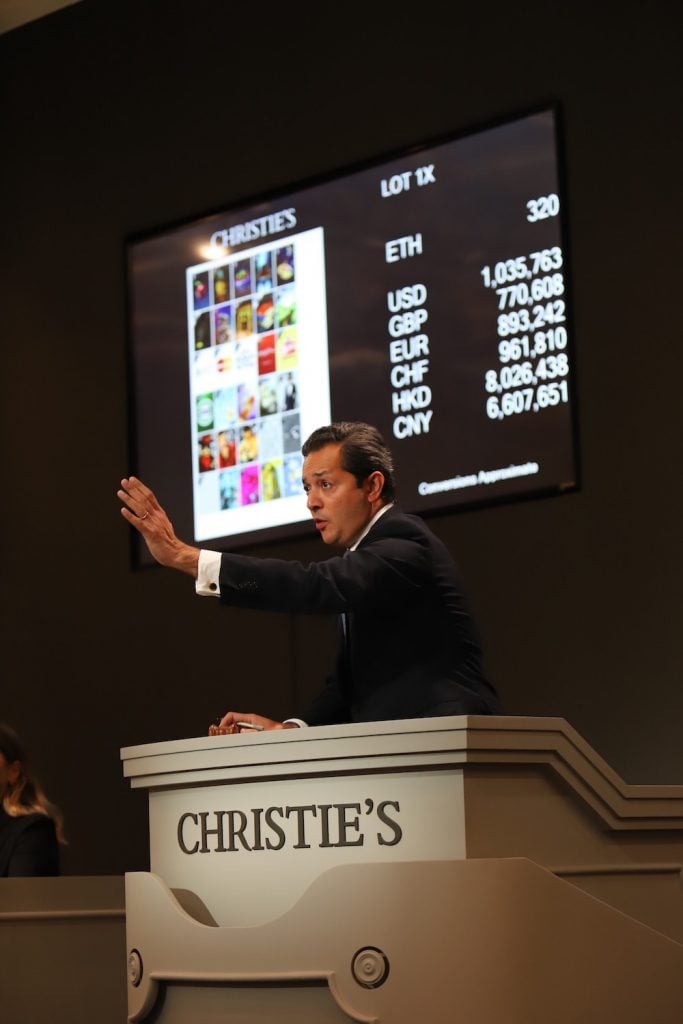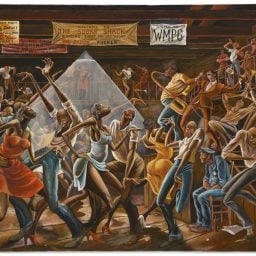If you were looking for an encapsulation of the weirdness of the art market in 2021, look no further than Christie’s marathon sale, “Postwar to Present,” on Friday. Offered outside of a traditional auction week, its eclectic wares ranged from newly minted NFTs to classic Abstract Expressionism.
The sale of more than 200 lots went on for the better part of a day and realized $34.4 million, easily clearing the presale range of $19 million to $28 million. (Note: as always, final prices include auction-house fees; presale estimates do not.)
The results offer a slightly more realistic snapshot of the market than carefully choreographed marquee evening sales, and they suggest that today’s buyers are looking for novelty—and the potential to make a quick profit—above almost all else.
The sale kicked off with a set of Curio Cards, said to be the first art NFTs minted on the Etherium blockchain. Christie’s accepted live bids in Ether cryptocurrency for the set of 30 cards plus 17b (a reference to a rare misprint that was included with the set, making a total of 31 NFTs). The group sold for ETH393 ($1.3 million), exceeding the high estimate of ETH350.
The rest of the sale was dominated by classic blue-chip names, ranging from Philip Guston to Yayoi Kusama, and contemporary stars like Mickalene Thomas and Allison Zuckerman.
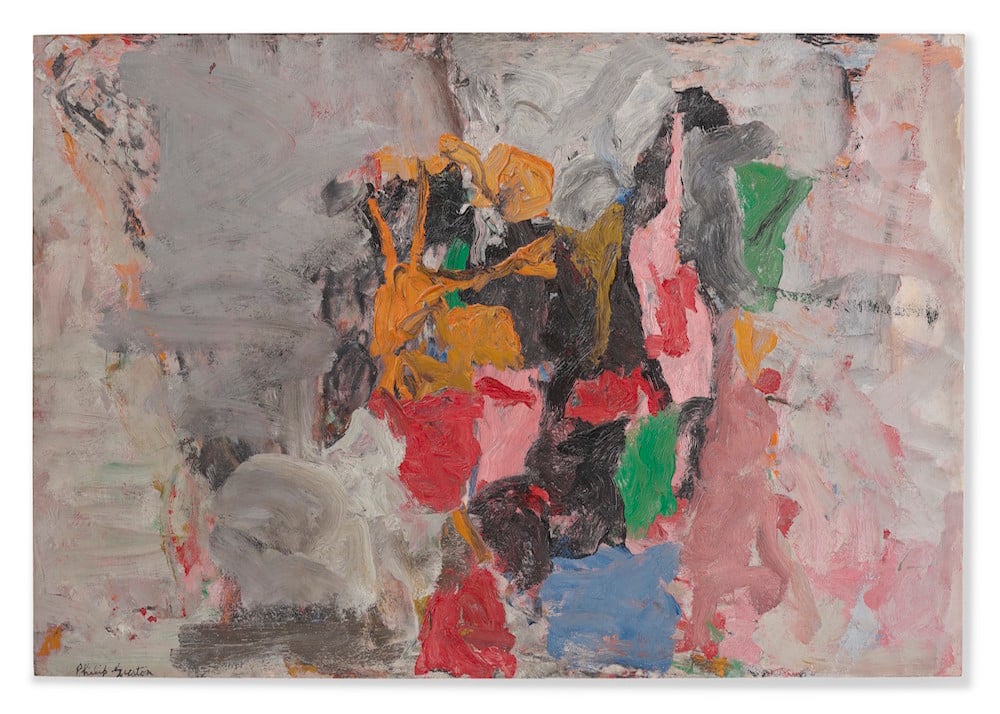
Philip Guston, The Clock II (1957). Image courtesy Christie’s.
Two works tied for highest price of the day, fetching $2.67 million each: Helen Frankenthaler’s Warming The Wires (1978) and Guston’s The Clock II (1957). While the Frankenthaler was expected to make a result in that range, the Guston was more surprising. The painting, whose sale coincides with a blockbuster show of work by the artist at Hauser & Wirth in New York, generated seven times its $350,000 high estimate. The painting last appeared at auction more than 40 years ago, in 1980; the consignor had owned it since 1983.
The continued demand for perennial auction-house favorite Yoshitomo Nara was evident in the performance of 1, 2, 3 (2006), a composition featuring three big-eyed girls in one of the artist’s crafted wooden frames. It sold for $2.1 million, smashing a high estimate of $750,000—and while it’s from a prime year for the artist, it’s not colorful or even particularly finished looking. It last sold at auction in 2010 at Christie’s London, where it fetched $128,939, according to the Artnet Price Database.

Helen Frankenthaler, Warming The Wires (1976). Image courtesy Christie’s.
Other high flyers included Mickalene Thomas’s Portrait of Aliyah (2018), which doubled its top estimate to sell for $625,000 at a time when the artist’s market has been on a tear amid a global show with Lévy Gorvy. Figurative paintings with a surreal twist also drew plenty of demand: Emily Mae Smith’s Hotline (2017) sold for $112,500, zooming past the high $50,000 estimate, while Zuckerman’s Woodland Muse (2018) fetched $250,000 (estimate: $40,000–60,000).
A group of seven works by Wayne Thiebaud from the trust of the late collector Frances Hamilton White all found buyers, led by Ridge Valley Farm Study, which totaled $990,000. A grouping of works by Charles White and Ernie Barnes from the collection of Hollywood producer Danny Arnold was also 100 percent sold, establishing a new auction record for Barnes with the $287,500 sale of The Disco (1978). Charles White’s Black Man (1965) was the top performer of the group, selling for $587,500.
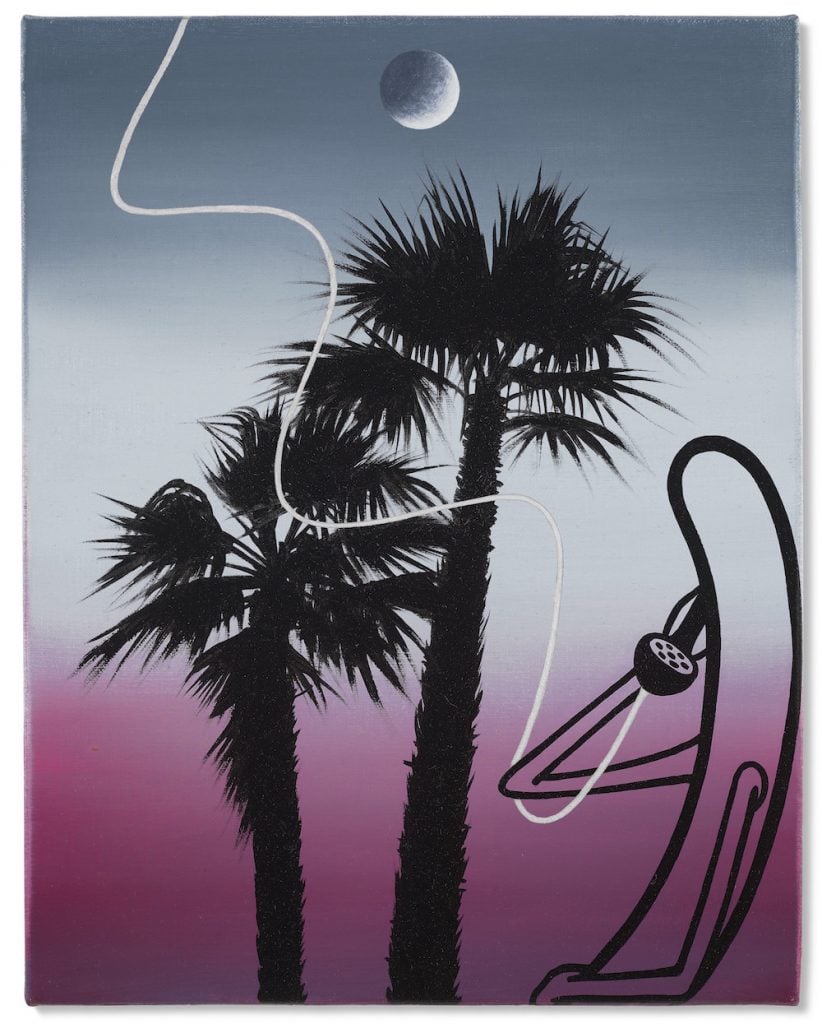
Emily Mae Smith, Hotline (2017). Image courtesy Christie’s.
New auction records were also set for Lynda Benglis, Gary Vaynerchuk (for an NFT that marked his auction debut), Roberto Fabelo, Dorothy Fratt, and rising artist Wonder Buhle Mbambo, whose work The Hearts tripled its $50,000 high estimate.
Christie’s specialist and head of the sale Isabella Lauria chalked up the strength of the auction to “offering top-quality works at attractive estimates, appealing to clients across the globe and drawing incredible depth of bidding on lots at all price points.”
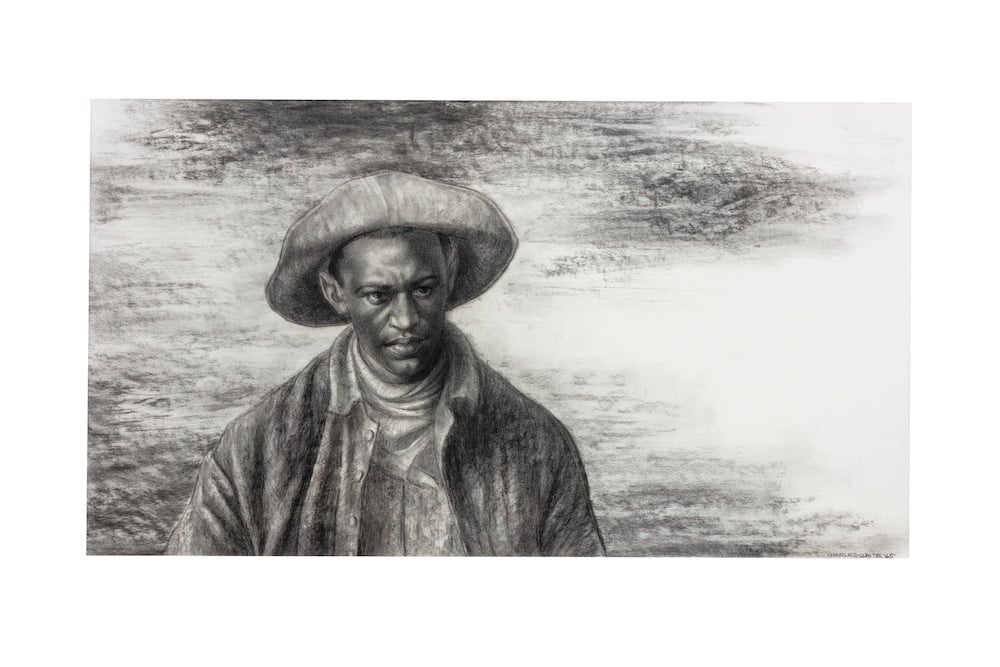
Charles White, Black Man (1965). Image courtesy Christie’s.
In a sign of the times, the sale was bookended by NFTs and concluded with artist Dread Scott’s provocatively titled White Male for Sale. The work is technically a standard NFT, but also something more—a discomfiting performance that implicates the very platform hosting the work. The artist’s gallerist, Cristin Tierney, approached Christie’s with the idea earlier this year.
The artist previously explained to Artnet News that he had no say in the pricing for the piece (it’s being consigned by Tierney), but offered up a guideline: $2,064,000, or the average lifetime income of a 35-year-old white male, if he worked to retirement age at 68. The sum is therefore roughly equivalent to the maximum labor one could extract from such a person “if you owned him,” Scott said. (Christie’s did not publicize the estimate, saying only that it was available “on request.”) The final price came in at $32,000, considerably below that lifetime earnings target.
